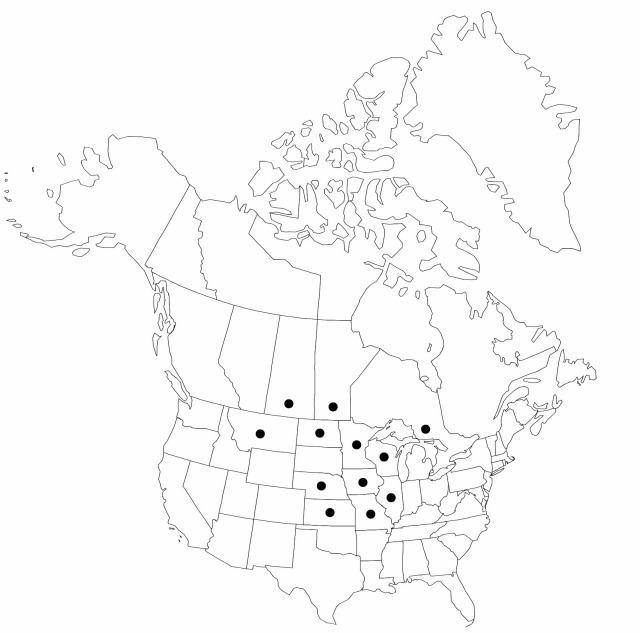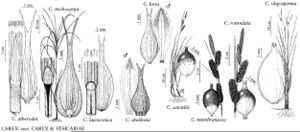Difference between revisions of "Carex laeviconica"
Amer. J. Sci. Arts, ser. 2, 24: 47. 1857.
imported>Volume Importer |
imported>Volume Importer |
||
| Line 54: | Line 54: | ||
|publication year=1857 | |publication year=1857 | ||
|special status=Illustrated;Endemic | |special status=Illustrated;Endemic | ||
| − | |source xml=https:// | + | |source xml=https://bitbucket.org/aafc-mbb/fna-data-curation/src/2e0870ddd59836b60bcf96646a41e87ea5a5943a/coarse_grained_fna_xml/V23/V23_930.xml |
|genus=Carex | |genus=Carex | ||
|section=Carex sect. Carex | |section=Carex sect. Carex | ||
Latest revision as of 20:44, 5 November 2020
Culms trigonous in cross section, (25–)30–110 cm; vegetative culms hard, solid with parenchyma, taller than fertile culms. Leaves: basal sheaths reddish purple, inner bands fibrillose with age; sheaths with apex of inner band pale to dark brown, translucent between veins, strongly veined, becoming ladder-fibrillose, glabrous, veins scabrous; ligules 2–12(–17) mm; blades 3–6 mm wide, glabrous, not papillose abaxially. Inflorescences (9–)15–65 cm; spikes erect or ascending; proximal 2–4 spikes pistillate; terminal 2–5 spikes staminate. Pistillate scales lanceolate to narrowly ovate, apex acute to acuminate, scabrous-awned, otherwise glabrous. Staminate scales lanceolate to narrowly ovate, apex obtuse to acuminate, occasionally with scabrous awn, glabrous. Perigynia 12–26-veined, (4.4–)4.8–8.4 × 1.8–3.3 mm, glabrous or scabrous on veins; beak straight to slightly spreading, 1.7–3.8 mm, glabrous or sparsely scabrous-pubescent, teeth (0.8–)1.1–2.3 mm.
Phenology: Fruiting May–Jul.
Habitat: Openings in bottomland and lowland forests, edges of marshes, lakes, and ponds, wet meadows, wet thickets, mesic to wet prairies and savannas
Elevation: 140–600 m
Distribution

Man., Ont., Sask., Ill., Iowa, Kans., Minn., Mo., Mont., Nebr., N.Dak., S.Dak., Wis.
Discussion
Carex laeviconica is characteristic of wetlands in the northern Great Plains and western portions of the tallgrass prairie region.
Carex laeviconica hybridizes with C. trichocarpa.
Selected References
None.
